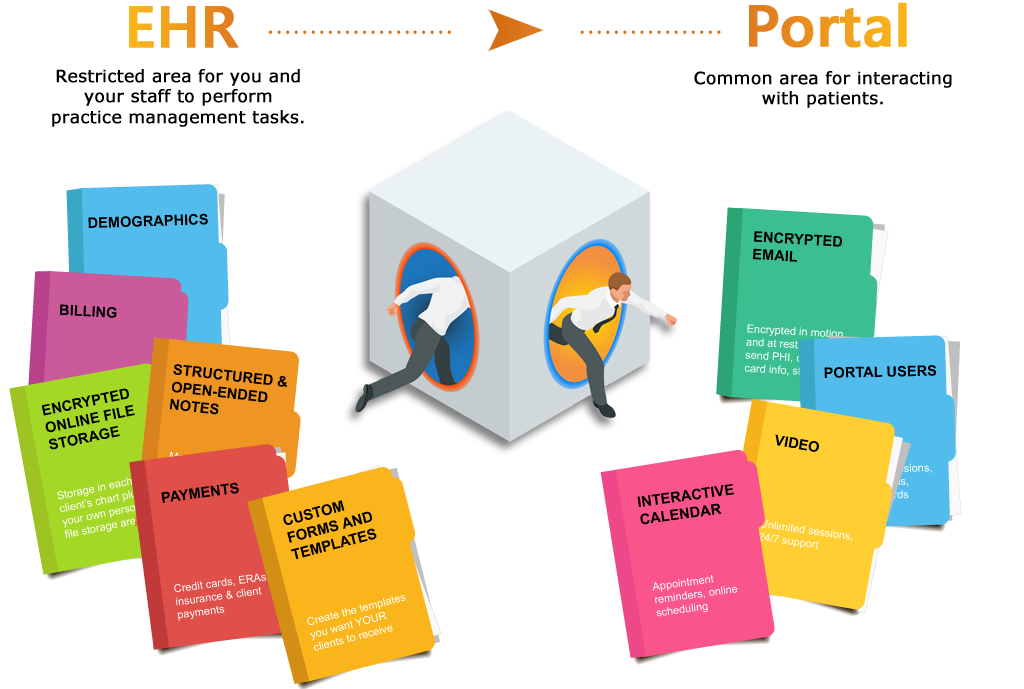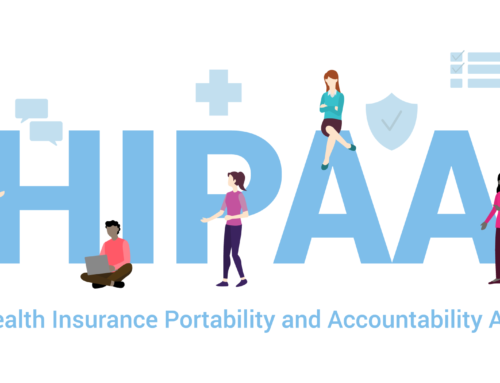Think you’re not doing telehealth? Think again. Although there’s no one-size-fits-all definition that cuts across state and/or discipline lines, most agree that telehealth basically involves any electronic method you use to communicate with or about your clients. This can include common things like phones, email and electronic file storage, in addition to video sessions, which is what we typically think of with the term telehealth.
Given that telehealth IS a lot more than just video, and given that the very breadth of the definition means that most of us are already doing some form of telehealth, we are tasked with finding ways to deliver these services that are easy to use, HIPAA-compliant, and within our budget. Therapists tend to obtain their telehealth apps in a somewhat piecemeal fashion. For example, they might decide they want appointment reminders, so they find a program that does that. If they later decide to put their calendar online, that might or might not be something that came with the appointment reminders, so the calendar/scheduling program could end up being a separate app. After that, they might see a need for doing some telehealth sessions, so they find a video program. Then they decide encrypted email would be really helpful . . . and online file storage . . . or maybe the ability to efax. The list – and the number of apps – could go on and on.
Although it’s understandable that therapists accumulate telehealth tools in this fashion, there are some inherent problems with doing it this way. One of the biggest issues is that none of your data is integrated with any of your other data. Information about your practice is scattered and nothing “talks” to anything else. If your client gets a new phone number or address, you will have to update each of your programs to keep all of the information about them current. Furthermore, each program you use has to be HIPAA-compliant – which also means that you have to have a Business Associate Agreement with that company. Additionally, since each program will have its own interface, you and/or your staff will have to spend time learning how to use each one. And finally, having a lot of different programs, even if they’re only $10 or $15 a month each, can become expensive as they add up. So what’s the solution?
Obtain a portal.
Preferably one that is integrated with an EHR.
The term portal, in this usage, simply means a software program where you, as the healthcare professional, can interface electronically with your clients. In other words, given our definition of telehealth as being any electronic method you use to communicate with or about your clients, portals contain tools for you to provide telehealth services. Portals are often part of other programs, usually EHRs (Electronic Health Records). The advantage of having your portal bundled with your EHR is that now ALL tools you use for your practice are in one place. This means, for example, that you can schedule a video appointment with a client and enter both your billing and payments for the session in that same app. You don’t need one app for video and another to keep track of your sessions and billing. If the app is user-friendly, you won’t have to search for the tools you need for billing or payments. They’ll be right there on your video interface.
What you can do within your portal depends on the features the portal offers. In a perfect world, this would include each and every telehealth tool you might want to use in your practice. However, currently, the most likely scenario is that you’ll be able to get some of what you want, but not all. Hopefully that will change in the near future.
Given the current status, then, what should you look for in a portal? Stay tuned for a series of posts on this topic: What to Look for in a Telehealth Portal.






